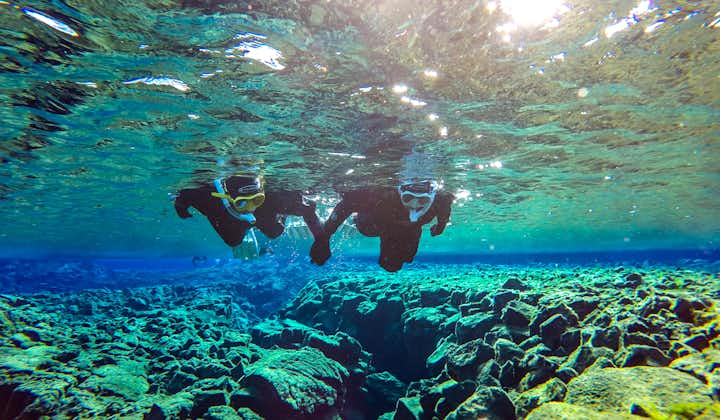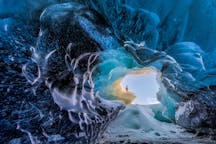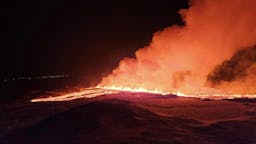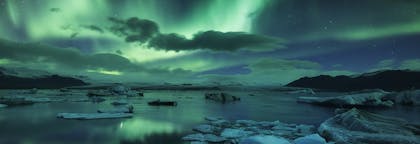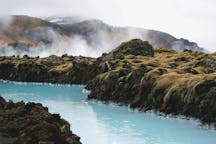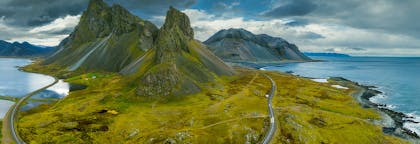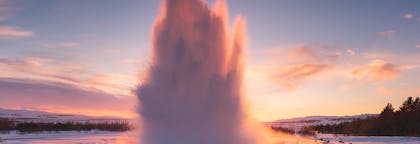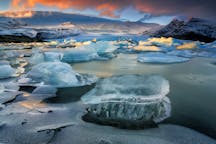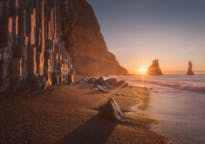Golden Circle & Snorkelling in Silfra with Free Underwater Photos
Description
Summary
Description
See the classic sights of the Golden Circle, visit some hidden gems, and snorkel in crystal clear glacial water on this exciting day tour. Those looking for a fun and unique way to experience both Icelandic nature and culture should book this tour now. Get your picture taken with a GoPro while swimming across the continents and receive them on your email immediately after your tour at no extra cost!
Thingvellir National Park, Geysir geothermal area, and Gullfoss waterfall are the three natural attractions that make up the Golden Circle and no visitor to Iceland should miss visiting these beautiful sights.
On this tour, you will not only see the three essential sights. In addition to that, you will get to snorkel in the crystal clear waters of Silfra Fissure, found within Þingvellir National Park.
The tour starts when you are picked up in Reykjavík and whisked away to the fissure Silfra. After receiving a drysuit and other snorkelling equipment, you’ll enter the water and will undoubtedly be awestruck by the incredibly bright blue colours of the fissure. You’ll be snorkelling between continents as Þingvellir National Park is neither located on the Eurasian nor the North American tectonic plates, but in a rift valley between.
After your journey through Silfra, it is time to explore the rest of Þingvellir, with its beautiful canyons and lava fields. Þingvellir is also the birthplace of Iceland’s parliament as it was here where the Viking settlers would gather to set the laws of the land.
From Þingvellir you’ll visit the geothermal area of Geysir where you’ll see bubbling mud pools, steaming and hot springs, as well as the mighty geyser Strokkur which erupts every 5-10 minutes. Then, it is off to the stunning waterfall Gullfoss where you’ll watch as glacial water from Langjökull glacier, hurls down in two ‘steps’ into an ancient canyon.
Then it is off to some hidden treasures found near the Golden Circle route, an aquamarine lake inside a crater which is made up of red volcanic rocks.
Mix sightseeing and adventure with this fun-filled day tour. Travel to some of the best sites in Iceland in a small group and create memories that will last a lifetime and receive free photos at the end of your tour at absolutely no extra cost. Check availability by choosing a date.
Included
Activities
What to bring
Good to know
To be able to do this tour, you have to be able to comply the following requirements:
- Have read, signed, and followed directions on the Snorkeling Silfra Medical Statement Form. You will receive a link to it after you book the tour.
- Be comfortable in water and be able to swim.
- Communicate in English at the time of the tour.
- Be physically fit.
- Not be pregnant.
- You must be ready to wear a tight and constricting dry suit to protect your body from the cold.
- You must be a minimum of 150 cm and a maximum of 200 cm in height and weigh between 45 and 120 kilos along with being physically fit.
- You must be a maximum of 69 years of age to participate in this tour. If you are 60 years of age or older, you need a medical waiver, available on page 2 of the medical form.
- You must be a minimum of 12 years of age to participate in this tour. Participants under the age of 18 must be accompanied by a parent or adult guardian booked on the same tour.
- If you are over 45 and partake/have partaken in pipe smoking or heavy alcohol intake, you need a medical waiver.
- Please note that should you have any neurological, circulatory or respiratory problems or underlying diseases, battled any illnesses or have any physical problems you might have to turn in a physicians allowance to participate in this tour.
Video
Verified reviews
Similar tours

Download Iceland’s biggest travel marketplace to your phone to manage your entire trip in one place
Scan this QR code with your phone camera and press the link that appears to add Iceland’s biggest travel marketplace into your pocket. Enter your phone number or email address to receive an SMS or email with the download link.
